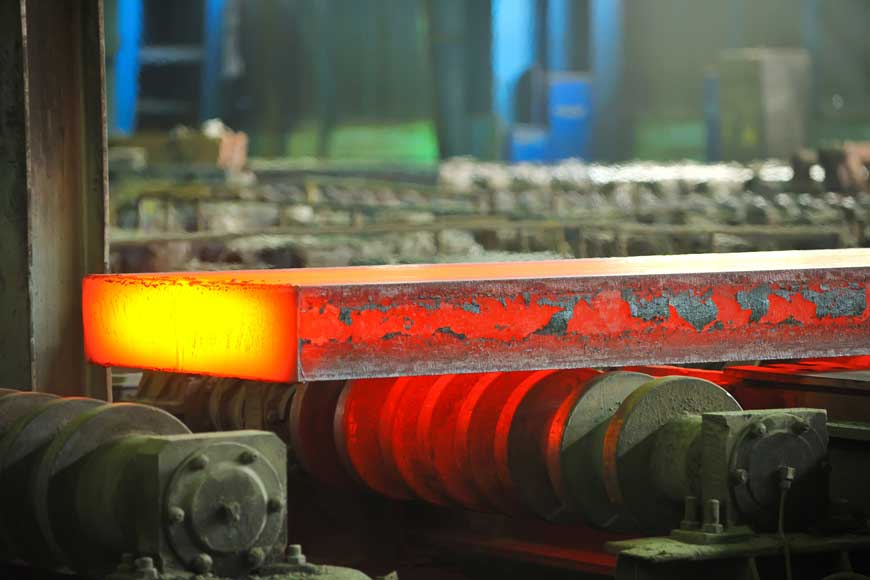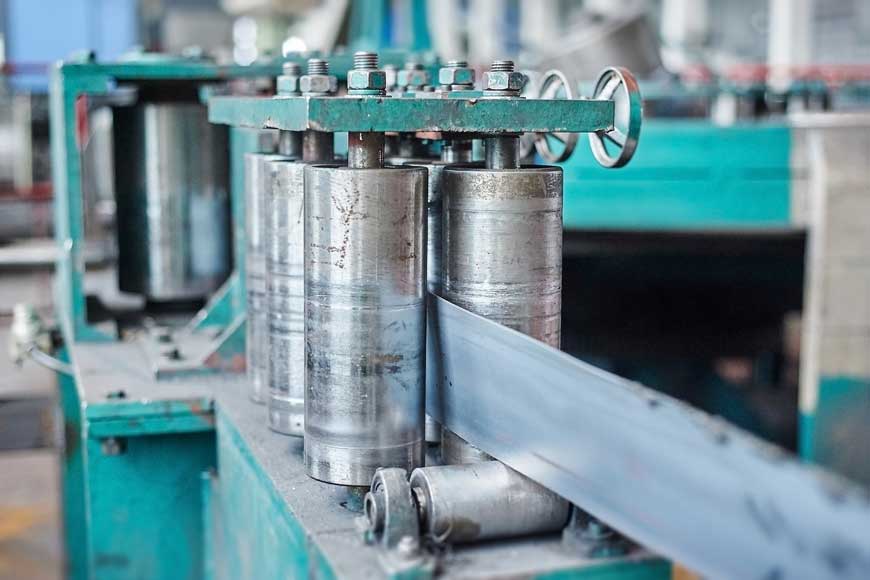Steel comes in many grades, specifications, shapes, and finishes — the World Steel Association lists over 3,500 different grades of steel, each with unique properties. The various types mean that steel can by widely used in infrastructure, appliances, vehicles, wind turbines, and many more applications.
Optimizing steel’s properties for each application goes beyond changing the chemical composition, however. The manufacturing processing of steel can also have a significant impact on steel products—even when the grades and specifications are the same. One key distinction among pre-fabricated steel products is the difference between hot rolled and cold rolled steel.
It’s important to note that the main difference between hot rolled and cold rolled steel is one of process. “Hot rolling” refers to processing done with heat. “Cold rolling” refers to processes done at or near room temperature. Although these techniques affect overall performance and application, they should not be confused with formal specifications and grades of steel, which relate to metallurgical composition and performance ratings. Steels of different grades and specifications can be either hot rolled or cold rolled—including both basic carbon steels and other alloy steels. Knowing which to use can help avoid over-spending on raw materials. It can also save time and money on additional processing. Understanding the differences between hot and cold steel is integral to choosing one over the other.
Hot rolled steel is steel that has been roll-pressed at very high temperatures—over 1,700˚F, which is above the re-crystallization temperature for most steels. This makes the steel easier to form, and resulting in products that are easier to work with.
Steel shrinks slightly as it cools. Since hot rolled steel is cooled after processing, there is less control over its final shape, making it less suitable for precision applications. Hot rolled steel is often used in applications where minutely specific dimensions aren’t crucial. Railroad tracks and construction projects often use hot rolled steel.

Hot rolled steel can often be identified by the following characteristics:
1.A scaled surface—a remnant of cooling from extreme temperatures
2.Slightly rounded edges and corners for bar and plate products (due to shrinkage and less precise finishing)
3.Slight distortions, where cooling may result in slightly trapezoidal forms, as opposed to perfectly squared angles
Cold rolled steel is essentially hot rolled steel that has been through further processing. Once hot rolled steel has cooled, it is then re-rolled at room temperature to achieve more exact dimensions and better surface qualities.
Cold rolled steel can often be identified by the following characteristics:
1.Better, more finished surfaces with closer tolerances
2.Smooth surfaces that are often oily to the touch
3.Bars are true and square, and often have well-defined edges and corners
4.Tubes have better concentric uniformity and straightness

With better surface characteristics than hot rolled steel, it’s no surprise that cold rolled steel is often used for more technically precise applications, or where aesthetics are important. But due to the additional processing for cold finished products, they come at a higher price.
In terms of physical characteristics, cold rolled steels are typically harder and stronger than standard hot rolled steels. As the metal is shaped at the lower temperatures, the steel’s hardness, resistance against tension breaking, and resistance against deformation are all increased due to work hardening.
The cabinet plate: With industry requirements, standard cabinet plate should use high-quality cold rolling steel plate, but many cabinets on the market replace by a hot plate or even iron plate, which is easy to rust and deformation, please carefully identify!

Our company's network cabinet products use high-quality cold rolled steel material.The surface of the cold-rolled steel plate is smooth and beautiful; The touch is smooth and delicate. It is full of toughness and steel strength, demonstrating the noble quality of the cabinet!
Please believe our real strenght and cooperation sincerity. I believe you have the trust and support, we will strive to do better and contact us!
Copyright © 2018 Latitude All Rights Reserved